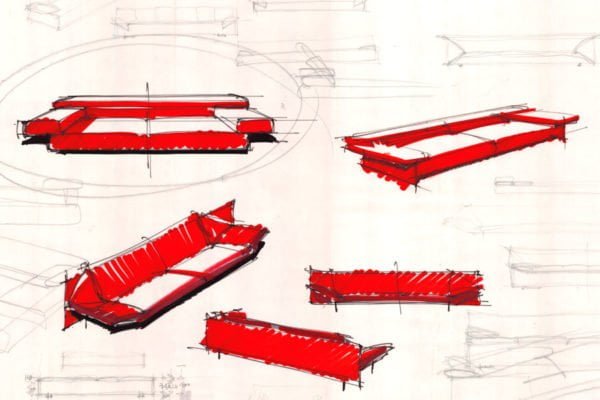Designer, painter and sculptor, Adriano Piazzesi (1923 – 2009) approaches projects in the light of the relationship between the object and its user. His work is not a tool for him, but rather an integral part of marketing and production, into which he can pour his artistic sensibility and attitude. Piazzesi has been active since the sixties: he studied architecture, from which he acquired the taste for designing the structures underlying surfaces, yet his interests have never been limited solely to the professional aspect of a designer.
Adriano Piazzesi could have easily chosen another path; writer, poet, painter or even performer. He would have been brilliant, exceptional, at all of these by the way. Because Adriano is something different, like Arketipo he has found that his craft can work in unison with the ethos of Arketipo.

“There are two great models or psychological types we could define respectively as “absolute” and “relative” designers, they establish relationships and set expectations of relationships that are substantially different. While the former, at times so enamoured of their own talent as to prefer to make the products themselves, the later may pander more to the business they work with, allowing their tastes to be determined by a bigger narrative.”
“With Arketipo it is different. They allow freedom to work, freedom to develop, freedom to question. It’s how we had the courage to tackle together something like, Loft.”
«A purely geometric form, which is articulated through a simple movement.»

Loft is a groundbreaking idea about movement and relaxation that fits the mould of the modern living environment, an iconic design that is another brain child of Adriano Piazzesi.
“I’ve always believed great works can be something like a poem written with a limited vocabulary. Simplicity need not hinder, but elevate.”
Loft sofa, 2003 designed by A. Piazzesi



Flexa is a chaise-longue that fascinates and captivates through the insistence of rare memories and of Galilean astrolabes – filtered, perhaps, by reminiscing of Kandiskian rather than the high tech structures that were around at the time, or for future use.
Piazzesi elevated design by connecting worlds, time and influences of every corner imaginable. He could have been a writer, a poet or a performer, but his calling was design. It was our privilege to have created with him.
«Simplicity need not hinder, but elevate»
Flexa, chaise-longue 1987 designed by A. Piazzesi

®2024 Arketipo srl | P.IVA IT06109200482 | Reg. Imp. Firenze N° 601207 | Cap. Soc. 2.000.000,00 € (effettivamente versato 500.000,00 €)
Privacy Policy | Cookie Policy | Powered by MapMedia